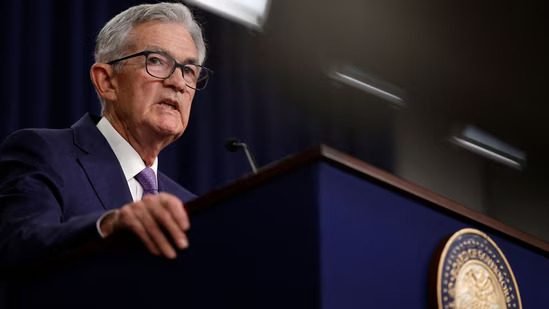For the eighth time in a row, the US Federal Reserve has increased the federal funds rate. The target range has increased from the prior range by 25 basis points to 4.75-5%. The goal is to increase interest rates across the board for the economy. What is the purpose of this? Mint’s assessment
The Fed has increased rates once more. Why?
The interest rate at which banks lend money they have on deposit with the Federal Reserve system to one another on an overnight basis is known as the federal funds rate. The Fed wants to raise interest rates in the economy and deter investment and consumption by raising this rate. The Fed seeks to reduce the amount of money that is spent chasing goods and services by discouraging consumption. The Fed anticipates that by inhibiting investment, fewer employment will be produced. This ought to sluggish wage growth. Overall, the action should aid in reducing the pace of inflation or price growth.
There may have been anticipation of a cut.
With three banks failing, the US is currently experiencing a mini-banking crisis. The main reason banks fail is because of unpaid debts. But the situation is different this time. In addition to lending, banks also purchase bonds, including those issued by the government and by private companies. Interest rates and bond prices have the opposite relationship. Bond prices have therefore decreased as a result of the Fed raising interest rates. And this has caused issues for a lot of banks, particularly when they have had to sell bonds to pay back deposits. Losses resulted from this. So, it was anticipated that the Fed might not increase rates.
Why then did the Federal Reserve continue to increase the rate?
The Fed’s long-term objective of 2% inflation is still being severely exceeded by inflation. The chosen gauge of inflation, the personal consumption expenditures price index, increased by 5.4% in January as opposed to the desired 2% increase. In actuality, the Fed projects that inflation will only decline to roughly 2% in 2025. “Inflation pressures continue to run strong,” Fed Chairman Jerome Powell stated.
Have the Fed’s rate increases reached their peak?
According to Powell, “Continued rate rises will not suppress inflation; more policy firming may be necessary.” This implies that the Fed will raise interest rates even more. Bond prices will decline if interest rates rise more, putting small- and mid-sized banks under even more stress. Yet, the Fed is prepared to accept this risk since, in Powell’s words, “high inflation imposes severe hardship as it erodes buying power, especially for those least able to absorb the increasing costs of necessities.”
How does this affect the Indian economy?
Usually, central banks follow the Fed’s lead. Given this, the Reserve Bank of India is quite likely to raise the repo rate, or the interest rate at which it lends to banks, at its upcoming meeting in early April. This suggests that loan payments may increase further. Also, international investors have superior investment options in the US when interest rates rise, suggesting that the Indian stock market is likely to remain boring. Also, there may be additional pressure on the rupee to dollar exchange rate.
Source: mint





